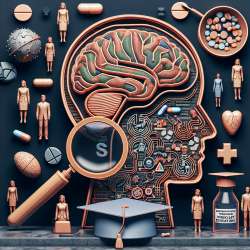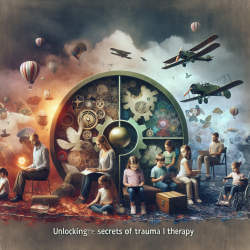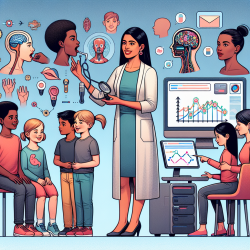Introduction
The COVID-19 pandemic has not only been a health crisis but also a catalyst for social discourse around blame and stigma. A recent study titled Stigma and blame related to COVID-19 pandemic: A case-study of editorial cartoons in Canada highlights how editorial cartoons can reflect societal attitudes and influence public opinion. As practitioners in speech-language pathology, understanding these dynamics can inform our approaches to therapy, especially for children who are particularly sensitive to societal narratives.
Understanding Stigma and Blame
The study reveals that editorial cartoons during the pandemic often depicted blame towards specific groups, such as people of Chinese descent, travelers, and those not adhering to public health measures. This "othering" process can exacerbate feelings of isolation and anxiety, particularly in children who may internalize these societal messages.
For speech-language pathologists, recognizing the impact of such stigma is crucial. Children who feel marginalized or blamed may exhibit increased anxiety, which can affect their communication skills and willingness to engage in therapy. By addressing these issues head-on, practitioners can create a more supportive environment that fosters resilience and growth.
Implementing Research Outcomes in Practice
Practitioners can take several steps to mitigate the effects of stigma and blame in their therapeutic practices:
- Foster Open Communication: Encourage children to express their feelings about the pandemic and any stigma they may have experienced. This can help them process these emotions and reduce anxiety.
- Promote Empathy and Understanding: Use stories and role-playing to teach empathy and understanding. By exploring different perspectives, children can learn to appreciate diversity and develop a more inclusive mindset.
- Incorporate Visual Aids: Use cartoons and visual aids to discuss the concept of stigma and blame. This can make abstract concepts more tangible and relatable for children.
- Collaborate with Families: Work closely with families to reinforce positive messages at home. Encourage parents to model empathy and understanding, which can significantly influence a child's perception of societal narratives.
Encouraging Further Research
While the study provides valuable insights, further research is needed to explore the long-term effects of stigma and blame on children's development. Practitioners are encouraged to engage in research initiatives that examine these dynamics and develop evidence-based strategies to support children effectively.
By staying informed and proactive, speech-language pathologists can play a pivotal role in transforming stigma into support, ensuring that children not only overcome challenges but thrive in a supportive and understanding environment.
Conclusion
The insights from the study on editorial cartoons during the COVID-19 pandemic underscore the importance of addressing stigma and blame in therapeutic settings. By implementing these research outcomes, practitioners can enhance their skills and create positive outcomes for children. To read the original research paper, please follow this link: Stigma and blame related to COVID-19 pandemic: A case-study of editorial cartoons in Canada.










